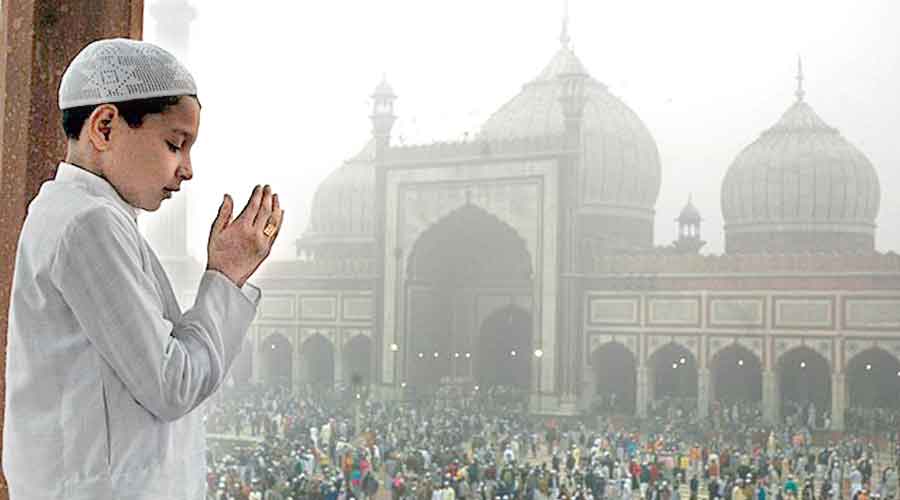
Changing patterns Decoding Muslim religiosity in India
Don't Miss
- UN chief stands ready to support any initiatives, acceptable to India, Pak for 'de-escalation', 'resumption of dialogue'
- Pak Defence Minister's open confession exposes country as 'rogue state' fuelling global terrorism: India at UN
- What's wrong if a country is using spyware against terrorists? Apex Court on Pegasus
This highly-rigid assumption is often used in two very different ways. In a negative sense, Muslim religiosity always comes across as a destabilizing phenomenon. For a rigid, secular mind, adherence to Islam is seen as an obstacle that prevents Muslims from embracing modernity. The Hindutva groups envisage, on the other hand, Muslim religiosity as a serious threat to Hinduism. The Muslim congregational prayers and Islamic emphasis on community feeling/brotherhood are always described as a communal strategy to weaken Hindu presence. The old Hindutva slogan, ‘Garv se kaho hum Hindu hai’ actually underlines this anxiety.
However, this enthusiastic response for namaz must also be seen in a comparative manner. In 2016, when a similar survey was conducted by CSDS-Lokniti, around 97 per cent of Muslims reported that they offered namaz on a regular basis. This means that there has been a significant decline in the actual number of regular Muslim worshippers in the last five years.
This is also true about the observance of roza (fasting) during the month of Ramazan. According to the report, around 85 per cent young Muslim respondents said that they observed fasting regularly. This figure in itself is quite impressive. However, if we compare this response with the findings of the 2016 survey, a different picture emerges. The 2016 study notes that 93 per cent young Muslim respondents reported that they are committed to keeping a fast during Ramazan. On the basis of these responses, the report argues that young Muslims are gradually moving away from religious practices. In fact, young Muslim women are relatively less religious than Muslim men.
These findings, we must remember, should not be exaggerated to make sweeping generalizations about any possibility of secularization among Muslims. Instead, these facts must be seen as indicators to explore the significant manifestations of Islamic religious practices in contemporary India. Two very broad observations could be made in this regard.
The second crucial observation is about the complex Muslim responses to aggressive Hindutva. The report shows that young Muslims remain apprehensive about the fate of communal harmony in the country. A significant number of respondents also claim that they have experienced discrimination among friends because of their religion. These everyday concerns, however, are not entirely interpreted through the prism of religion or religiosity. Muslim respondents seem to interpret the growing intolerance in the country as a political phenomenon, which is often used for electoral mobilization.
These two broad observations introduce us to the complexities of the everyday life of Muslim communities. It appears that Muslims create a thin, dividing line between an inner domain of spirituality and the outer domain of politics. The crisis of religiosity is placed in the inner domain simply to explore new moral and ethical possibilities within the framework of Islam. Aggressive Hindutva, on the other hand, is seen as an essential element of the outer political domain to work out various survival strategies in an overtly hostile, anti-Muslim environment.
(Hilal Ahmed is Associate Professor, CSDS, New Delhi)


0 Response to "Changing patterns Decoding Muslim religiosity in India "
Post a Comment
Disclaimer Note:
The views expressed in the articles published here are solely those of the author and do not necessarily reflect the official policy, position, or perspective of Kalimpong News or KalimNews. Kalimpong News and KalimNews disclaim all liability for the published or posted articles, news, and information and assume no responsibility for the accuracy or validity of the content.
Kalimpong News is a non-profit online news platform managed by KalimNews and operated under the Kalimpong Press Club.
Comment Policy:
We encourage respectful and constructive discussions. Please ensure decency while commenting and register with your email ID to participate.
Note: only a member of this blog may post a comment.